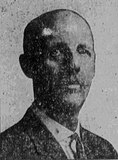
The 1912–13 United States Senate elections were held on various dates in various states. They were the last U.S. Senate elections before the ratification of the Seventeenth Amendment in 1913, establishing direct elections for all Senate seats. Senators had been primarily chosen by state legislatures. Senators were elected over a wide range of time throughout 1912 and 1913, and a seat may have been filled months late or remained vacant due to legislative deadlock. Some states elected their senators directly even before passage of Seventeenth Amendment. Oregon pioneered direct election and experimented with different measures over several years until it succeeded in 1907. Soon after, Nebraska followed suit and laid the foundation for other states to adopt measures reflecting the people's will. By 1912, as many as 29 states elected senators either as nominees of their party's primary or in conjunction with a general election.

John Henry Morehead was an American politician who served as the 17th governor of Nebraska from 1913 to 1917.

Samuel Roy McKelvie was an American politician from the U.S. state of Nebraska. McKelvie served as the 19th governor of Nebraska, from 1919 to 1923. He was also the 13th lieutenant governor of Nebraska, from 1913 to 1915.
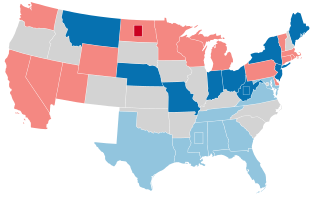
The 1910–11 United States Senate election were held on various dates in various states. As these U.S. Senate elections were prior to the ratification of the Seventeenth Amendment in 1913, senators were primarily chosen by state legislatures. Senators were elected over a wide range of time throughout 1910 and 1911, and a seat may have been filled months late or remained vacant due to legislative deadlock. However, some states had already begun direct elections during this time. Oregon pioneered direct election and experimented with different measures over several years until it succeeded in 1907. Soon after, Nebraska followed suit and laid the foundation for other states to adopt measures reflecting the people's will. By 1912, as many as 29 states elected senators either as nominees of their party's primary or in conjunction with a general election.
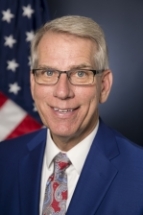
The lieutenant governor of Nebraska is the highest-ranking executive official in the State of Nebraska after the governor. According to the Nebraska State Constitution, in the event a governor dies, becomes permanently incapacitated, resigns, or is removed from office, the lieutenant governor will become governor.

The 1920 Nebraska gubernatorial election was held on November 2, 1920, and featured incumbent Governor Samuel R. McKelvie, a Republican, defeating Democratic nominee, former Governor John H. Morehead, and progressive-backed independent candidate, York Mayor Arthur G. Wray, to win a second and final two-year term in office.
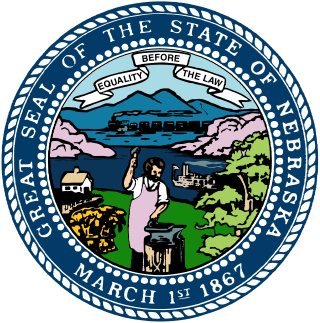
The 1912 Nebraska gubernatorial election was held on November 5, 1912.
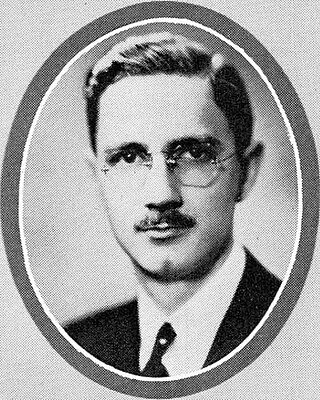
The 1938 Nebraska lieutenant gubernatorial elections were both held on November 8, 1938. Incumbent Nebraska Lieutenant Governor Walter H. Jurgensen was convicted of a felony in March 1938 and barred from running for a fourth term as lieutenant governor in June, 1938, leaving the 1938 lieutenant gubernatorial race wide open. The vacancy caused by his removal from office brought about two elections for lieutenant governor in 1938: the regular election which always happened biennially and a special election to fill the vacancy.

The 1924 Nebraska lieutenant gubernatorial election was held on November 4, 1924, and featured Republican nominee George A. Williams defeating Democratic nominee P. J. Mullin as well as Progressive nominee Granville Hummer and Prohibition nominee J. F. Webster. Incumbent Nebraska Lieutenant Governor Fred G. Johnson, a Republican, chose not to seek reelection to the office of lieutenant governor in order to challenge George W. Norris for the Republican nomination for US Senate from Nebraska.

The 1918 Nebraska lieutenant gubernatorial election was held on November 5, 1918, and featured Republican nominee Pelham A. Barrows defeating Democratic nominee William B. Banning as well as Prohibition Party nominee David B. Gilbert. Incumbent Nebraska Lieutenant Governor Edgar Howard decided not to seek reelection to the office of lieutenant governor in order to run for US Senate, but he was defeated in the Democratic primaries by John H. Morehead.

The 1916 Nebraska lieutenant gubernatorial election was held on November 7, 1916, and featured Democratic nominee Edgar Howard defeating Republican nominee Herbert P. Shumway as well as Socialist Party nominee Edmund R. Brumbaugh and Prohibition Party nominee Charles E. Smith. Incumbent Nebraska Lieutenant Governor James Pearson sought reelection to the office of lieutenant governor but was defeated for reelection in the Democratic primary by Edgar Howard.

The 1914 Nebraska lieutenant gubernatorial election was held on November 3, 1914, and featured Democratic nominee James Pearson defeating Republican nominee Walter V. Hoagland as well as Progressive Party nominee G. L. E. Klingbiel, Socialist Party nominee Glen H. Abel, and Prohibition Party nominee Henry F. J. Hockenberger. Incumbent Nebraska Lieutenant Governor Samuel R. McKelvie did not seek reelection.

The 1910 Nebraska lieutenant gubernatorial election was held on November 8, 1910, and featured incumbent Nebraska Lieutenant Governor Melville R. Hopewell, a Republican, defeating Democratic nominee Ralph A. Clark as well as Socialist Party nominee George L. Slutter and Prohibition Party nominee Samuel Lichty.

The 1888 Nebraska lieutenant gubernatorial election was held on November 6, 1888, and featured Republican nominee George de Rue Meiklejohn defeating Democratic nominee Frank Folda as well as Prohibition Party nominee John Dale and Union Labor nominee C. W. Potter.

The 1892 Nebraska lieutenant gubernatorial election was held on November 8, 1892, and featured incumbent Nebraska Lieutenant Governor Thomas Jefferson Majors, a Republican, defeating Populist nominee Charles D. Shrader and Democratic nominee Samuel N. Wolbach as well as Prohibition Party nominee James Stephen.

The 1896 Nebraska lieutenant gubernatorial election was held on November 3, 1896, and featured Populist and Democratic fusion nominee James E. Harris defeating his major rival, Republican nominee Orlando Tefft. Other candidates who received two percent of the vote or less included Gold Democratic nominee Owen F. Biglin, Prohibition nominee Lucius O. Jones, Socialist Labor nominee Fred Herman, and National Silver nominee Oscar Kent. Incumbent Nebraska Lieutenant Governor Robert E. Moore did not seek reelection.
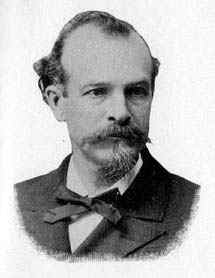
The 1900 Nebraska lieutenant gubernatorial election was held on November 6, 1900, and featured Republican nominee Ezra P. Savage defeating incumbent Nebraska Lieutenant Governor Edward A. Gilbert, the Populist and Democratic fusion nominee. Other candidates who received two percent of the vote or less included Prohibition nominee Charles R. Lawson, Midroad Populist nominee Herman G. Reiter, and Social Democratic nominee David McKibben.
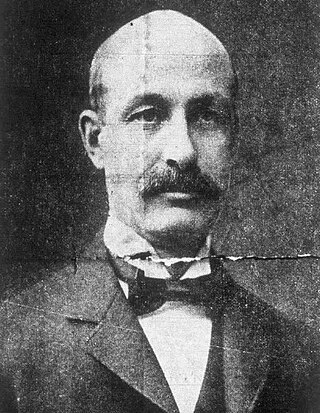
The 1902 Nebraska lieutenant gubernatorial election was held on November 4, 1902, and featured Republican nominee Edmund G. McGilton defeating Edward A. Gilbert, the Populist and Democratic fusion nominee, as well as Prohibition nominee Isaiah Lightner and Socialist nominee Andrew D. Peugh.

The 1906 Nebraska lieutenant gubernatorial election was held on November 6, 1906, and featured Republican nominee Melville R. Hopewell, defeating William H. Green, the Democratic and Populist fusion nominee, as well as Prohibition nominee J. D. Forsythe and Socialist nominee C. A. Howe.


